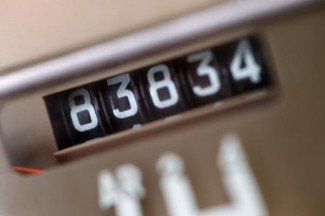
Are you a business owner? Are you an employee who drives a lot and is not reimbursed for mileage? Do you track your business mileage? If you don’t, you should! Appropriately deducting mileage is a great way to save tax dollars and reduce the largest recurring expenses that we face: taxes.
The IRS recently announced the standard mileage rate that goes into effect January 2013. The new rate is 56.5 cents per mile, which is up a penny from 2012. While the penny increase will not make you rich, the habit of properly tracking business mileage could save you hundreds and possibly thousands of dollars in taxes.
The great thing about business mileage is that it’s a sunk cost…..you have already purchased the gas. So, why not do your best to capture every penny you can and save a few extra dollars in taxes. In reality, most people forget to properly track mileage, so let’s look at how it can impact your taxable bottom line.
Here’s an example:
While preparing taxes a business owner may guestimate their miles driven to be roughly 3000. The owner feels comfortable they can create a mileage log to substantial this number, so they use a conservative number of miles of 3000. But, if in reality, the actual miles driven were closer to 5000, the business owner is leaving money on the table. The additional 2000 miles that were overlooked could save the business owner almost $500 in taxes (if they are in the 28% tax bracket and the Social Security Payroll Tax Holiday disappears in 2013). This is a big win, especially for the little time it takes to properly track mileage.
How to substantiate mileage:
The IRS wants to see three things when it comes to substantiating legitimate business mileage:
- The amount of miles driven ( I would use the odometer reading at the beginning and end of the trip)
- Date and place of travel
- Brief description of business purpose of travel
While this may seem overbearing to some, it’s really not difficult. I suggest to clients that they keep a mileage log in their car. There are moble apps to help in this area as well. If you’re meeting a colleague for a business lunch, simply note the date, who you met, where you met, and the beginning and ending odometer reading. It literally will take thirty seconds or less.
You say it’s not worth your time. Check out this number. If it takes you 30 seconds to compile this info and your round trip for lunch was 15 miles, tracking this expense will net you $440 an hour!!!! I often tell clients to think of substantiation duties as another job and try to give them perspective on the value of their time. Anyone want to turn down a job that pays $440 a hour?
The penny increase the IRS generously adds to the standard mileage rate for 2013 may seem small, but it’s the overall importance of how you handle the increase that matters. Successful financial planning is not always about big moves. It’s often a series of small steps that add up. This philosophy is why I feel financial planning is a process. It’s meant to be an ongoing adventure to create more and more efficiency in our financial world.

